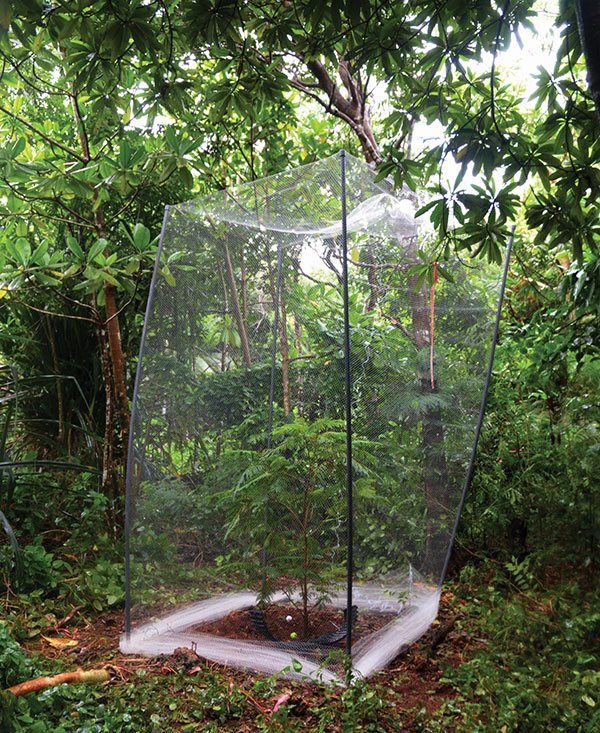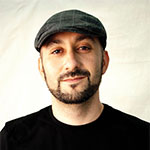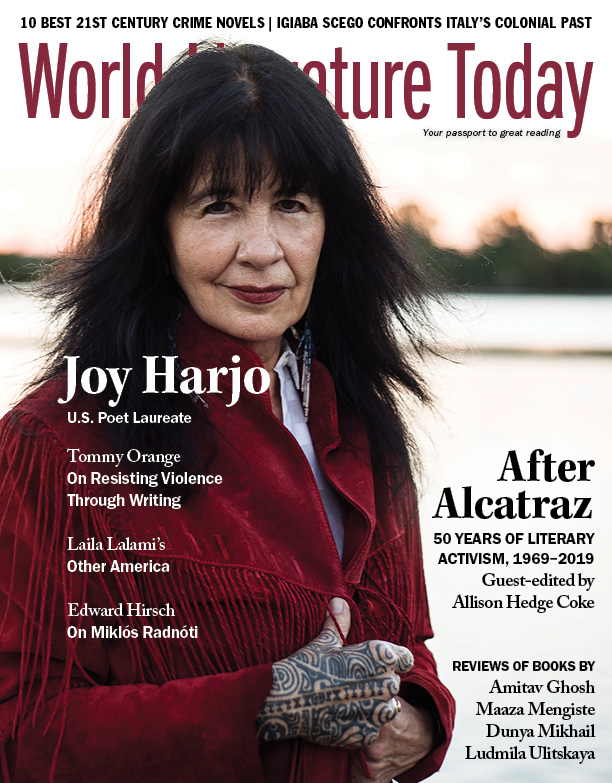Guam and Literary Activism

More than forty of the endangered tree species saplings were planted around Andersen
by biologists from the University of Guam, Guam Plant Extinction Protection Program,
and the US Air Force in an attempt to protect the species from extinction.
Poetry has the power to raise political awareness, inspire environmental justice, cultivate empathy, protest oppression, empower communities, and advocate for peace.
I am a native Chamorro born and raised on the western Pacific island of Guam. In my small village, electricity outages were common. My relatives arrived to our house as if drawn by the magical smoke from my dad’s barbecue grill. During those powerless nights, we sat in a circle eating and talking story. Actually, I never talked. I only listened as my elders’ words carved the silence into a canoe that carried our stories across the oceans of time and space.
The only sound that ever interrupted our stories was the sonic blast of fighter jets flying overhead. This, too, was common. American military bases occupy nearly 30 percent of Guam, which has been a territory of the United States since 1898. Guam is often referred to as an “Unsinkable Aircraft Carrier” and “The Tip of America’s Spear in Asia.”
Over the past century, the military has dredged our coral reefs, poisoned fishing grounds, killed marine life, contaminated soil and drinking water, clear-cut jungles, destroyed endangered species habitats, and evicted my people from our ancestral lands. Guam was once a place of biodiversity; now, nearly a hundred Superfund and dump sites plague our island.
During those powerless nights, a story was always told about a relative who recently died from cancer, or a relative recently diagnosed with cancer. Toxins are buried in our bodies like unexploded ordnances.
Toxins are buried in our bodies like unexploded ordnances.
⚚
My family migrated to California in 1995, when I was fifteen years old. This, too, was common. Since the 1960s, my people have migrated to the “mainland” in search of work, school, and health care. Today, more of us live off-island than on-island.
On the first day of my new high school, a teacher asked where I was from. After I answered, he responded: “I’ve never heard of Guam. Prove it exists.” As I approached the world map on the wall, it transformed into a mirror: my body, like the Pacific Ocean, was split in two and splayed to the margins.
“I’m from this invisible island,” I said and pointed to an empty space where I knew my homeland to be. The students laughed. Guam is so small it often does not appear on maps.
“Are you a US citizen?” he interrogated. “Yes,” I said and explained that we learn American English, attend American schools, eat American food, listen to American music, watch American movies and television, play American sports, study American history, enlist in the American military, die in American wars, and dream American dreams.
“You speak English well,” he proclaimed, “with almost no accent.”
And isn’t this what it means to be from an unincorporated territory: to be foreign in a domestic sense. To be invisible.
⚚
Throughout high school and college, literature helped me navigate life on the “mainland” and form a deeper understanding of American history and politics. I was drawn to books by Native American and ethnic minority writers because I could relate to their stories of struggle, survival, and hope. To me, written narratives were an extension of the oral tradition I grew up around. The act of reading felt like listening to invisible storytellers silently whisper their tales.
To me, written narratives were an extension of the oral tradition I grew up around. The act of reading felt like listening to invisible storytellers silently whisper their tales.
Despite the fact that Pacific Islanders are one of the fastest-growing immigrant groups in the United States, I never saw myself in the curriculum. In the American literary imaginary, the Pacific is an empty space devoid of literature.
This absence motivated me to write my own stories, and I eventually pursued an MFA at the University of San Francisco. I graduated in 2006 with a manuscript of poems about Chamorro identity and the political history of Guam. The preface to my thesis begins: “On some maps, Guam doesn’t exist; I point to an empty space in the Pacific and say, ʻI’m from here.’ On some maps, Guam is a small, unnamed island; I say, ʻI’m from this unnamed place.’ On some maps, Guam is named ʻGuam, USA.’ I say, ʻI’m from a territory of the United States.’”
That same year, the Department of Defense announced a plan for a massive military buildup on Guam. Valiant Shield, a military training exercise, was first held that year on Guam and in the surrounding waters. These actions were part of the US geopolitical strategy, “The Pacific Pivot,” to increase its military presence and power in the region.
⚚
The threat of the Pacific Pivot compelled me to join a California-based Chamorro activism group called Famoksaiyan, a word in our language that translates as “the place or time of nurturing” or “the time to paddle forward and move ahead.” We organized events across the state to raise awareness about Guam and the devastating impacts of militarism. I performed my poetry at many of these events as a creative way to address the issues.
In 2008 a delegation of Famoksaiyan members traveled to the United Nations in New York City for the meeting of the Special Committee on Decolonization, which advocates for the remaining non-self-governing territories. When we began our testimonies, the US representative walked out of the room.
This, too, is what it means to be from a territory: to speak our truth even when those who need to listen refuse to hear you.
My MFA manuscript was published as my first book that same year. Empowered by speaking to the international community, I traveled across the states performing poetry and giving lectures at universities, literary festivals, libraries, and high schools. For most audience members, it was the first time they had ever heard of Guam or talked with a native Pacific Islander.
⚚
In 2010 the Guam Humanities Council invited me to be a keynote speaker in a series of “community conversations” about the legacy of militarism. This trip was my first time returning home after living in California for fifteen years, and it coincided with the publication of my second book.
While home, I was featured on the local television news channel, the major radio station, and the daily newspaper. I visited and performed my poetry at several of Guam’s public high schools as well as at Guam’s only community college and university. After each performance, facilitators from the council engaged the audience in conversations about the military. In a sense, the poetry became a bridge to discuss politics. This profound experience solidified my belief in the power of the humanities to create space for civic reflection.
After my visit, the Guam Legislature passed a resolution that recognized me as “an accomplished poet who has been a phenomenal ambassador for our island, eloquently conveying through his words, the beauty and love that is the Chamorro culture.”
⚚
The idea of being a poetic ambassador for my homeland took on new meaning a couple years later when I received an opportunity to represent Guam at Poetry Parnassus in London. This “Cultural Olympiad” was a weeklong festival held in London and organized by renowned poet Simon Armitage. The festival featured one poet from each of the two hundred countries competing in the 2012 Olympics and included some world-famous poets representing their countries, such as Seamus Heaney (Ireland), Wole Soyinka (Nigeria), Bill Manhire (New Zealand), John Kinsella (Australia), and Kay Ryan (United States).
Beside performing my poems, I participated on two panels organized by PEN International: “Environmentalism and Eco-Poetry” and “Minority Languages, Marginalized Voices.” I felt proud to represent Guam on this international stage, and I felt empowered to stand side by side with poets from around the world advocating for justice, freedom of expression, and human rights.
⚚
I have since moved to Hawai‘i and accepted a position in the English department at the University of Hawai‘i, Mānoa, where I teach creative writing and Pacific literature. To give my students opportunities to experience literary activism, I have organized poetry readings at Honolulu’s only co-op grocery store, at the World Conservation Congress of the International Union for the Conservation of Nature, and at a Climate Change in the Pacific conference, to name a few.
Ultimately, I hope to instill in my students the belief that poetry is an essential part of social movements. Poetry has the power to raise political awareness, inspire environmental justice, cultivate empathy, protest oppression, empower communities, and advocate for peace.
⚚
As we confront these precarious and frightening times, there is one memory I carry with me and return to. During my work with the Guam Humanities Council in 2010, I performed at George Washington, the oldest public high school on Guam. After my reading, I noticed one of the students crying.
“Are you okay?” I asked.
“I have never seen our culture in an actual book before,” she said. “I just assumed we weren’t worthy of literature.”
We are worthy of literature. We deserve to be seen and heard. And I will continue to write poetry to inspire my people and to speak up for my homeland. I will continue to write poetry to help us memorialize the past, navigate the present, and imagine a sustainable future.
Read an interview with Craig Santos Perez as well as his poem, "Family Trees" from this same issue.













